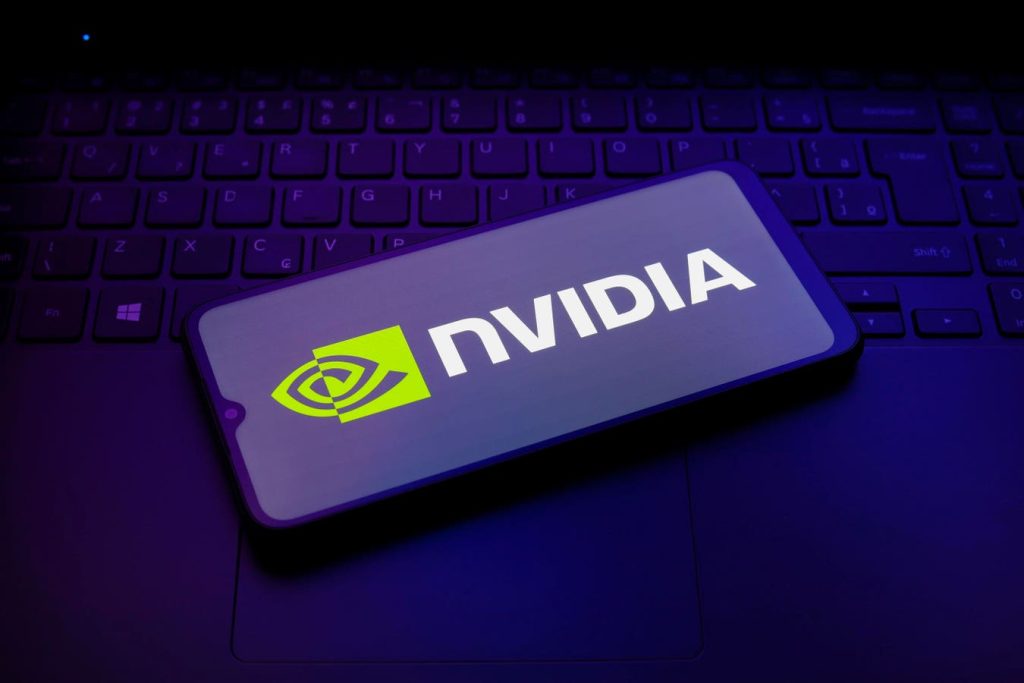Nvidia’s Potential 50% Stock Drop: A Deep Dive into the Risks
Nvidia, the dominant force in the graphics processing unit (GPU) market, has experienced a meteoric rise fueled by the explosive growth of artificial intelligence (AI). However, looming on the horizon are significant risks that could trigger a substantial stock correction, potentially driving the price down by 50% to around $65 from its current level of approximately $130. This analysis delves into the key factors contributing to this potential downturn, focusing on revenue growth, profit margins, and price-to-earnings multiples.
Revenue Growth Concerns: Cooling AI Training Demand and Emerging Competition
Nvidia’s remarkable revenue growth, tripling over the past year, has been driven by the intense demand for GPUs used in AI training. However, this growth is showing signs of slowing, and there’s a realistic possibility of further deceleration or even decline in the medium term. Several factors contribute to this concern. First, the initial wave of AI model training, a computationally intensive process heavily reliant on Nvidia’s GPUs, is likely approaching a saturation point. Companies that invested heavily in building these models may see diminishing returns on further training efforts. Second, the availability of high-quality data, essential for effective training, is becoming a bottleneck. Much of the readily accessible data has already been utilized, potentially limiting future training needs. Third, the economic viability of the AI ecosystem remains questionable, with many companies yet to demonstrate substantial returns on their AI investments. This could lead to reduced capital expenditure on GPUs, directly impacting Nvidia’s sales. Finally, while Nvidia currently dominates the inference phase of AI (where trained models are applied to real-world tasks), this less computationally demanding phase opens the door for competition. Rivals like AMD and Intel are developing alternative processors that could capture market share, especially for simpler inference tasks where Nvidia’s high-end GPUs might be overkill.
Margin Compression: Intensifying Competition and In-House Chip Development
Nvidia’s profit margins have expanded significantly in recent years, reaching near 50% in FY24. However, this impressive performance faces considerable challenges. The competitive landscape is intensifying, with AMD and Intel making significant investments in AI-focused chips. AMD’s new MI300X chip, for example, boasts superior performance in certain aspects compared to Nvidia’s offerings, while Intel is targeting the market with more affordable options. Moreover, major tech companies like Google, among Nvidia’s largest customers, are developing their in-house AI silicon. Amazon’s recent announcement of its proprietary Trainium chipset, along with its efforts to market these products to other companies (like Apple), further exemplifies this trend. These competitive pressures are likely to erode Nvidia’s pricing power and compress its margins, potentially pushing them down to around 35%.
Valuation Reassessment: Shrinking Multiples in a Changing Monetary Policy Environment
Considering the potential for slowing revenue growth and margin contraction, Nvidia’s current valuation appears vulnerable. If revenue growth decelerates to around 10% over the next two years and margins decline to 35%, net income could actually decrease by about 15% by 2027. This scenario would undoubtedly impact investor sentiment, leading to a reassessment of Nvidia’s growth prospects and a corresponding contraction in its price-to-earnings (P/E) multiple. Furthermore, the changing monetary policy landscape, with the Federal Reserve signaling a slower pace of interest rate cuts, could also negatively impact high-multiple tech stocks like Nvidia. If the P/E ratio shrinks from its current level of around 44x to a more conservative 25x, the stock price could fall to the projected $65 level.
The Time Horizon and Volatility of a Potential Downturn
The precise timing of this potential downturn is uncertain, but whether it unfolds over two or three years is less critical than the underlying factors driving it. If competitive pressures intensify and Nvidia’s core GPU business faces significant headwinds, a substantial correction is likely. The high volatility of Nvidia’s stock price underscores this risk. While the stock delivered impressive returns of 125% in 2021 and 239% in 2023, it also experienced a 50% decline in 2022. This volatility contrasts sharply with the more stable performance of diversified portfolios.
The Bottom Line: A Realistic Assessment of Nvidia’s Risks
While Nvidia has undoubtedly benefited from the AI boom, the company faces significant challenges that could lead to a substantial stock price correction. Cooling AI training demand, increasing competition from established and emerging players, and the potential for margin compression create a compelling case for a more cautious outlook. Furthermore, a reassessment of Nvidia’s valuation in light of these factors, coupled with a potentially less favorable monetary policy environment, could exacerbate the downside risk. Investors should carefully consider these factors when evaluating their investment in Nvidia.
Disclaimer: This analysis is based on current market conditions and future projections, which are inherently uncertain. Actual results may deviate significantly from the scenarios presented. This analysis is for informational purposes only and should not be construed as financial advice. It is crucial to conduct thorough research and consult with a qualified financial advisor before making any investment decisions.

